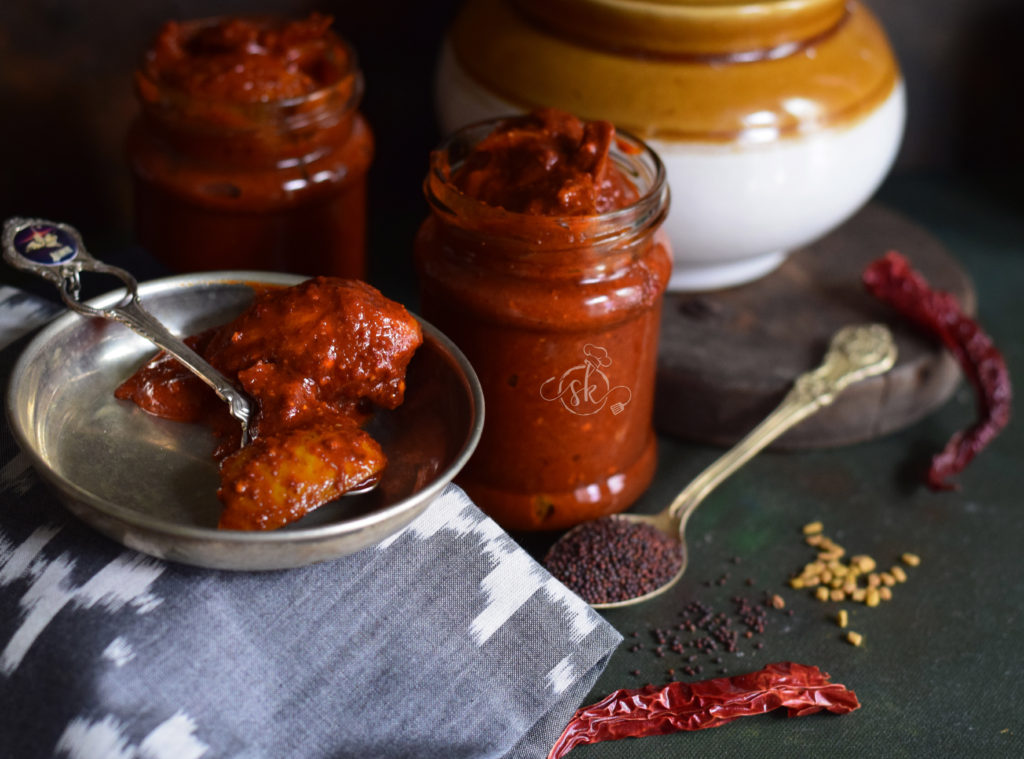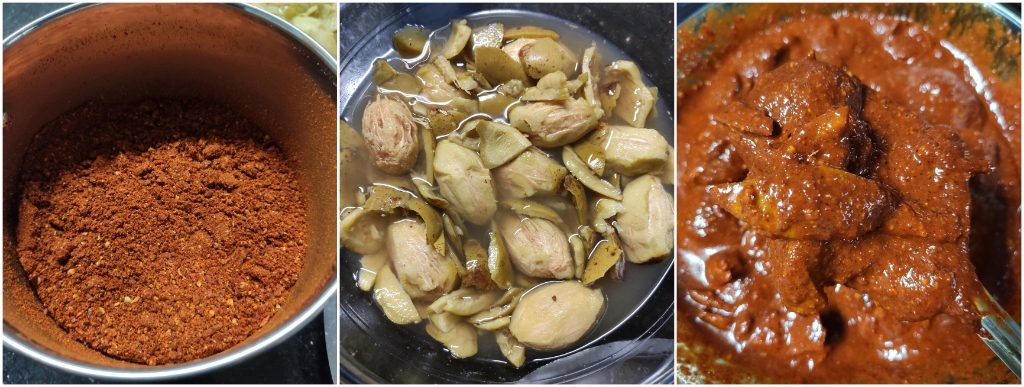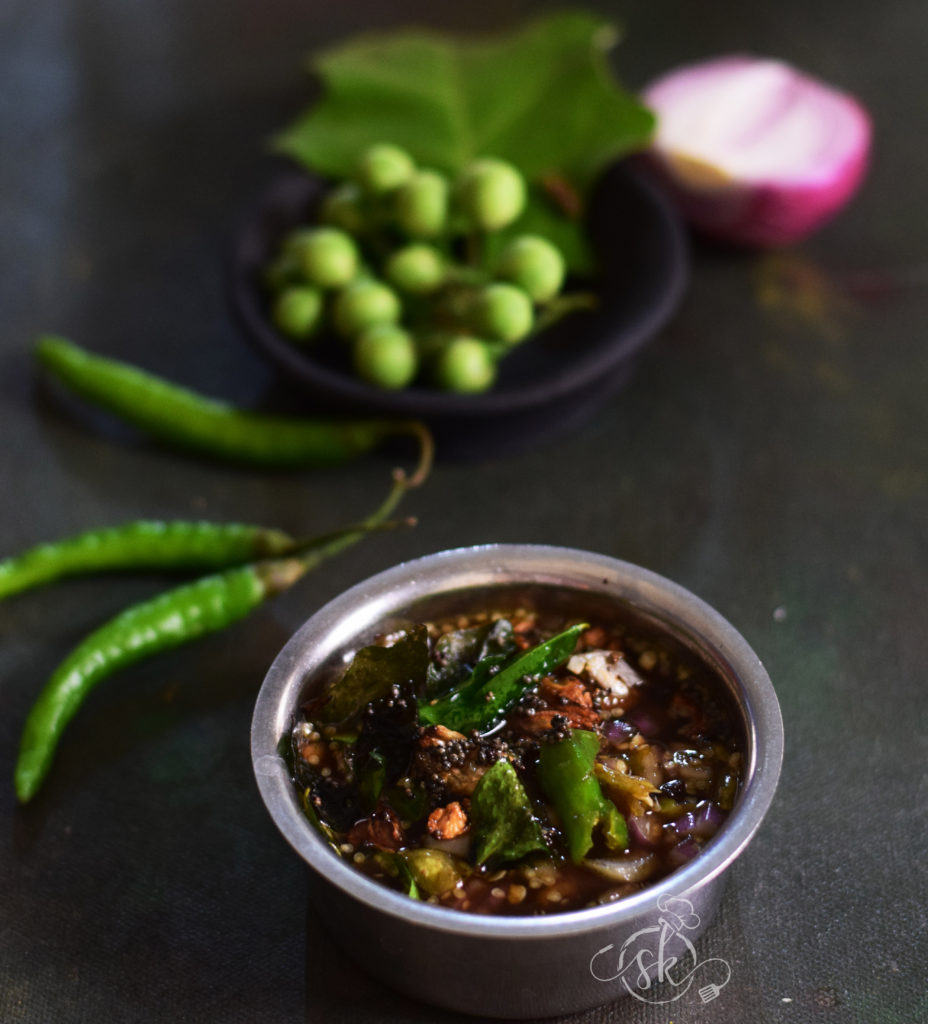We call Hog plum “Amtekai” in Kannada and “ambate” in our local language. In our region, you will find two varieties of hog plums. One is Wild variety, also known as Indian sour hog plum, and the other is grafted or Kashi Amtekai/ hog plum. Grafted variety is nothing but Hog plums which we usually find in South America or Southeast Asia. Also known as Ambarella or Golden apple, which belongs to Spondias Dulcis.
The wild variety, Spondias pinnata, is commonly known as Amtekai/ Amra/Amda/Hog Plum/Junglee Aam in India. Because of its sour taste, it is usually used in pickle making or as a souring agent in some traditional curries. When it matures, a seed becomes woody, and skin becomes thin.
After a long time, I found these beauties in the Mangalore store, which I frequently visited. A lot of preparation goes behind the making of a pickle. I observed that the recipe flowed down from generation to generation. A spoonful of this pickle, which is spicy and tangy, is enough to perk up a bland meal, or as a south Indian, it is a divine combo with thick curd rice.

Ingredients:
Hog plum – 500 gms
Salt – 2 cups
Water – 2 cups
For the pickle Masala:
Dried Red chillies – 100 grams ( I have taken ½ of Byadagi and ½ of Guntur to balance the heat)
Mustard – 25 grams
Methi – 1 tbl spoon
Hing – ½ tsp
Turmeric – 2 tsp
Method:
-Wash, drain the hog plums. Put it under the sunlight for 2 hours.

-Now, crush and separate the skin from the inner hard seed. Keeping under the sun would help loosen up the skin from the core.
-Now, prepare saltwater. Take 2 cups of salt, 2 cups of water and boil nicely.
-Switch off the gas, add the hog plum pieces, inner core and leave it to cool. In this way, hog plum would soften quick and absorb the salt properly.
To make Pickle Masala:
-Dry Roast Methi seeds until dark brown, then mustard seeds until it pops, then hing, turmeric.
-Put 1 tsp of oil and roast chillies until it puffs and becomes crisp. Cool everything and make powder.

-Add this powder to a cooled hogplum added salt solution, and mix properly. Store it in a dry glass bottle, leave it aside for a couple of days to mature and absorb all the flavours.
-Then, store it in a refrigerator to extend its shelf life. When it is ready, enjoy it with curd rice.




